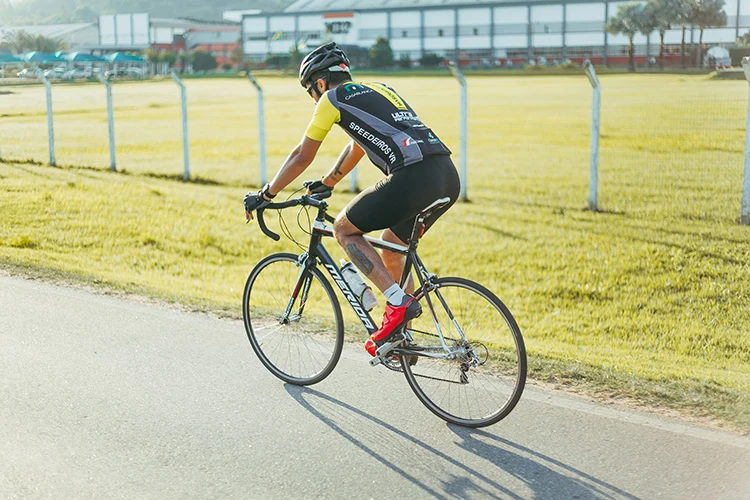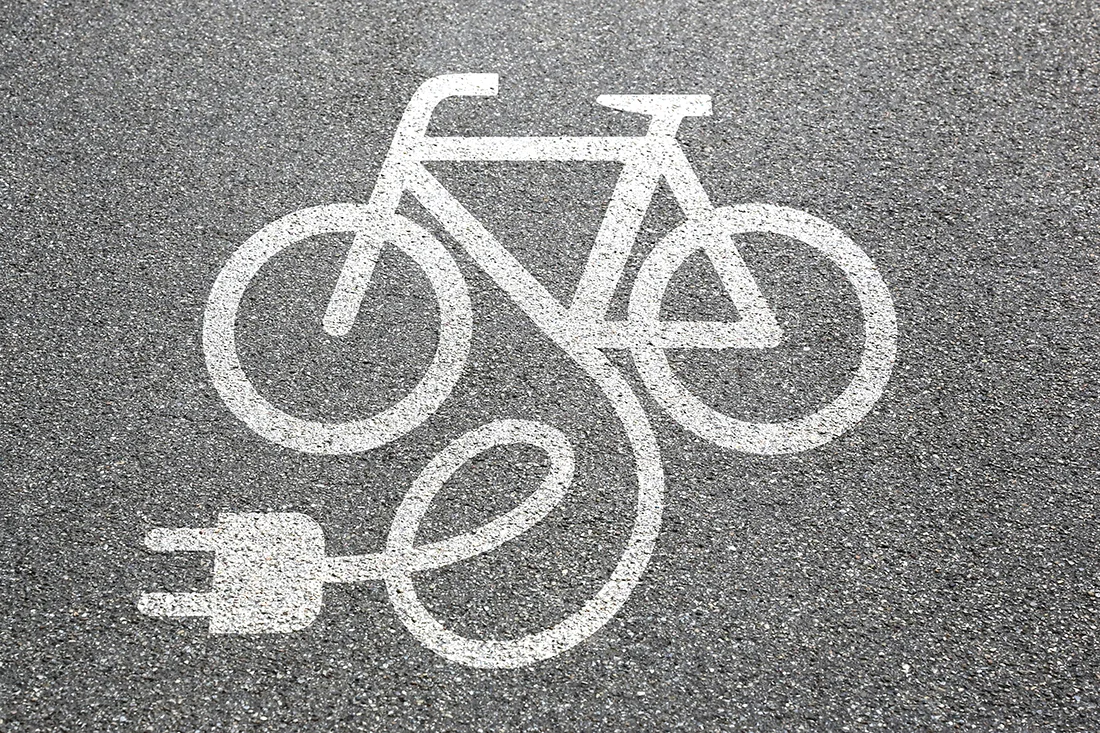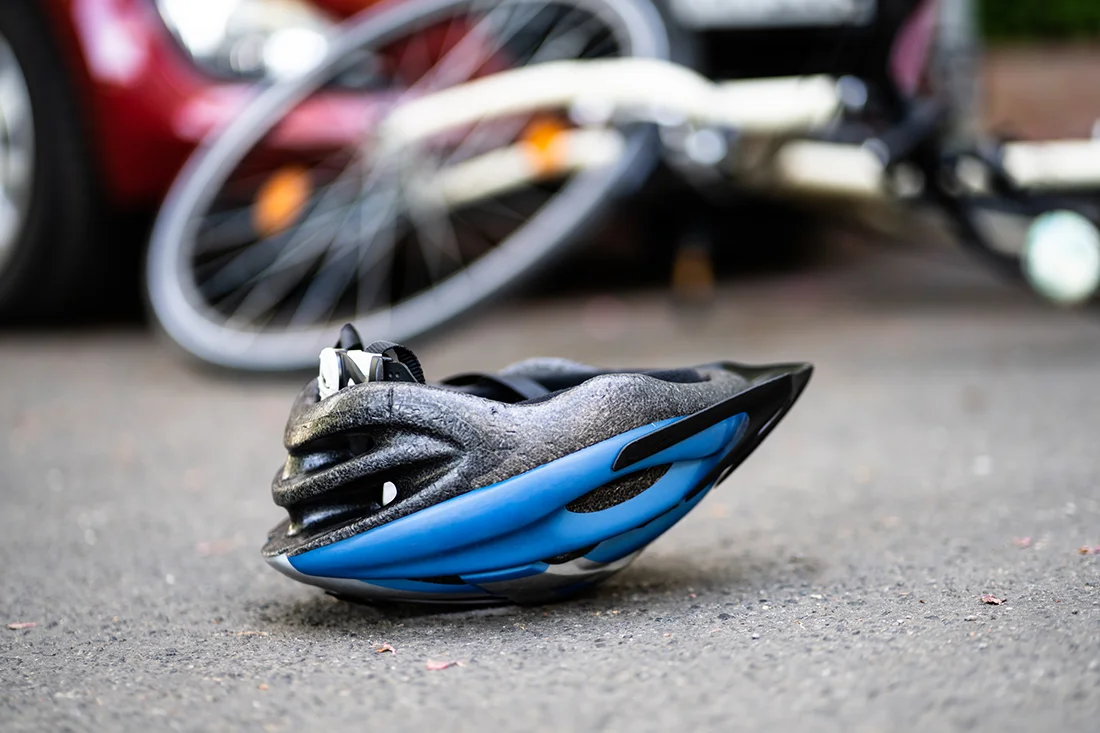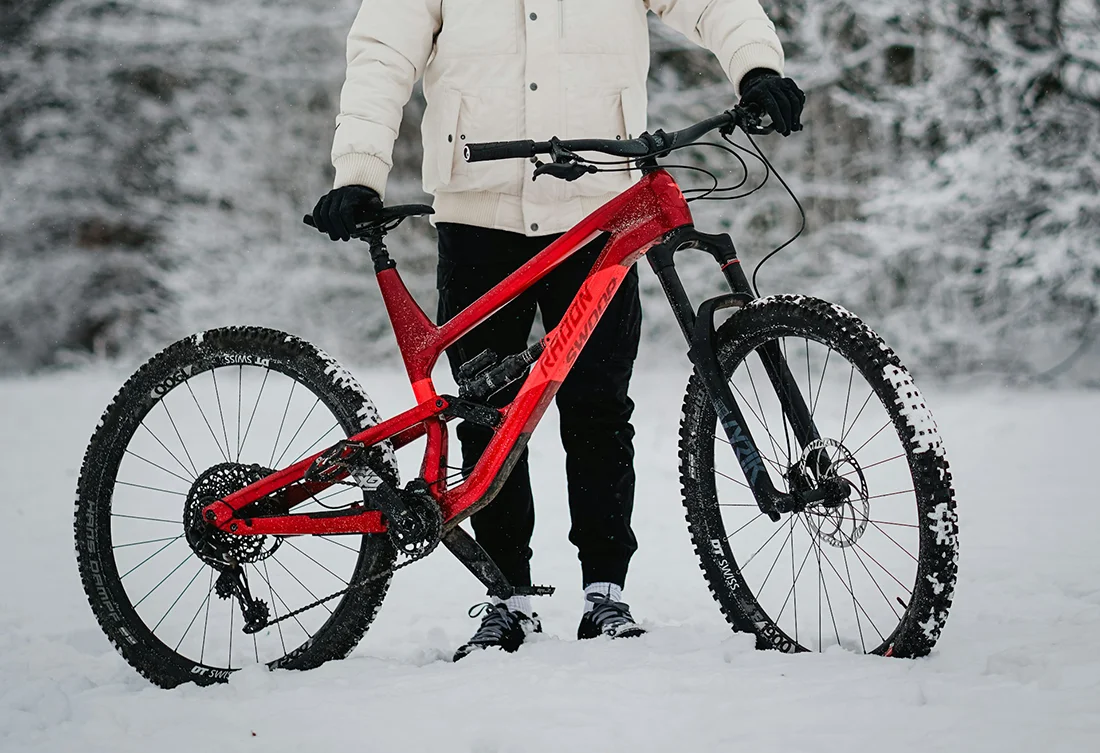When it’s time to get strong and fast quickly, you need to do things the right way. Cycling workouts are not intended only for the pros but all cyclists can benefit from them. If you’ve reached your plateau and you’re feeling stuck, try these workouts and smash your PRs.
If you want to become a faster and stronger cyclist, you need to spend a lot of time in the saddle, but you need to do it wisely. When you go to the gym, you don’t just do stuff randomly — you go with a plan and you stick to it. Cycling training is the same.
If you’re an absolute beginner and you still don’t have a lot of miles in your legs, focusing on volume and frequency is your best bet. You’ll benefit a lot from relatively easy endurance rides.
However, if you’re past having sore legs from weekend rides, you need a bigger challenge to conquer in order to keep progressing.
Contents
- What Are the Benefits of Structured Training?
- Understanding the Rating of Perceived Exertion (RPE)
- Best Cycling Workouts
- Power Pyramid Sufferfest
- Short and Sweet Threshold Intervals
- Strength Building Hill Repeats
- 30s ON – 30s OFF HIIT
- Sprint Speed Workouts
- Diesel Engine Endurance Workout
- Recovery Rides — A Trip to the Cafe
- Final Takeaways
What Are the Benefits of Structured Training?
To become the best cyclist you can be, there’s an optimal, science-backed training procedure to follow. Structured training is the process in which you focus on a specific goal and thus train a specific energy system in your body that will help you reach that goal.
The idea behind structured training is to progressively overload your body, which will in turn adapt to those stresses by developing stronger muscles, more lung capacity, more red blood cells, a stronger heart muscle, etc.
Structuring your training will also help you avoid overtraining which can be detrimental for progress. By having a plan, you’ll know exactly when it’s time to back off and prevent fatigue from taking over.
Related: How to Avoid Overtraining in Cycling
If you want to climb a hill faster, steal a local KOM, complete longer rides, or do better in a race, structured training is for you.
Understanding the Rating of Perceived Exertion (RPE)
Before we take the plunge and begin our cycling workouts, it’s a good idea to explain one concept that you will come across often in the rest of this article — Rating of Perceived Exertion (RPE).
If you don’t have a heart rate monitor or a power meter, you can use RPE to gauge how much effort you’re putting into your training session. It is based on your subjective feel, so RPE is different for every person.
Refer to the Borg Scale from 1 to 10 below, to get an idea of how these effort levels should feel:
| Rating of Perceived Exertion | Effort Level |
| 1 | Very Easy |
| 2 | Easy |
| 3 | Moderate |
| 4 | Somewhat Hard |
| 5 | Moderately Hard |
| 6 | Hard |
| 7 | Very Hard |
| 8 | It Hurts! |
| 9 | Screaming in Pain |
| 10 | Please Stop! |
If you have a heart rate monitor or a power meter, you should find your training zones and do your workouts according to them.
Best Cycling Workouts
Now that we have the basics covered, check out our recommendation for the best cycling workouts that will ramp up your speed and power.
Most of these can be done indoors or outdoors!
-
Power Pyramid Sufferfest

Indoor & Outdoor
Pyramid workouts are well-known in the world of sport because they progressively overload and fatigue your muscles, forcing them to adapt.
The purpose of this workout is to help you retain energy for the last few minutes of a race or the last few bends of a hill.
The idea is to increase the duration of your effort while maintaining the same rest period. You can rest by spinning easily to bring your heart rate down and prevent lactate acid from building up.
The set described below lasts for around 15 minutes. You can do one repetition if you are a beginner, or up to three repetitions if you are an experienced rider and you want to suffer.
- Step 1: Start with a warm-up by spinning easily for 10 minutes and then doing three 1-minute efforts at around 4 – 5 RPE with 30 seconds of rest in-between.
- Step 2: Ride 2 minutes at around 9 RPE, which should feel like an all-out effort. This should not be a sprint. Make sure to pace yourself so as not to burn too soon. Rest for 30 seconds.
- Step 3: Ride 2 and a half minutes at around 8 RPE, which should feel just slightly easier than before. Rest for 30 seconds.
- Step 4: Ride for 3 minutes at around 7 RPE. This should still feel pretty hard, but not as much as before. Rest for 30 seconds.
- Step 5: Do the intervals again, but reverse the efforts by starting with 3 minutes at 7 RPE. These 6 efforts comprise ONE SET.
- Step 6: Spin easily for 5 minutes and repeat the pyramid if you feel like it.
You can do this workout outdoors or on an indoor trainer. If you do them outdoors, try to find a flat section of road or a road with a constant slight gradient (up to 3%).
-
Short and Sweet Threshold Intervals

Indoor & Outdoor
This workout is designed to boost your Functional Threshold Power (FTP). FTP refers to the highest possible power that you can sustain for one hour.
This is an important ability for all aspects of cycling. If you improve your FTP, you’ll do better on long sustained climbs, in road races, time trials, and criteriums.
Do the workout below once a week or a maximum of two times if you are a trained athlete for maximum gains:
- Step 1: Warm up with 10-15 minutes of light riding to bring your heart rate up.
- Step 2: Do four 12-minute intervals at around 6-7 RPE, which should be just above your one-hour power.
- Step 3: Rest for 6 minutes between each interval and remember to drink fluids.
- Step 4: After the last interval, ride for 30 minutes at an endurance pace, 3-4 RPE. You should not struggle to talk at this pace. Try to maintain a high cadence, 90+ RPM.
- Step 5: Do another eight 30-second intervals at an 8-9 RPE, which should feel like an all-out effort. Rest for 30 seconds between each interval.
- Step 6: Spin lightly for 10 minutes to cool down.
You can do this workout indoor or outdoor, depending on your preferences. If it feels too easy, you can add another 12-minute interval section before the endurance part to make it more challenging.
-
Strength Building Hill Repeats

Outdoor Preferred
Even if you’re not a serious cyclist with a goal to win races, conquering hills on a bike is an important task. Becoming a better climber will boost your morale, make daily commutes easier, and help you snatch a Strava KOM from a local legend.
Whatever your motivation, these hill repeats will help you build more strength in your legs and significantly improve your power.
To complete the workout below, it’s best to find a moderately hard 5-minute climb, but you can do it inside as well by setting your trainer to high resistance.
- Step 1: Warm up by spinning easily for 10 to 15 minutes, with a few moderate-power bursts to bring your heart rate up.
- Step 2: Complete five 5-minute hill climbs at 7 RPE, with a moderate 80-85 RPM cadence.
- Step 3: Rest for 2 minutes between each climb.
- Step 4: Complete another four 5-minute hill climbs in a higher gear that will bring your cadence down to around 60 RPM or lower. Try to do the efforts seated and without rocking your upper body too much.
- Step 5: Rest for 3 minutes between each effort.
- Step 6: Complete four 20-second hill sprints at 9 RPE, which should feel like an all-out effort.
- Step 7: Rest for 5 minutes between each effort.
- Step 8: Cool down with light spinning for 10 to 15 minutes.
Ideally, these workouts should be done outside on a hill with a constant gradient. Alternately, do them inside by ramping up the effort levels.
-
30s ON – 30s OFF HIIT

Indoor & Outdoor
High-Intensity Interval Trainings (HIIT) are a staple for building aerobic and anaerobic fitness in any sport. The optimal HIIT effort duration is around 30 seconds, which will allow you to do max efforts without burning out.
If you’re an experienced cyclist, you should try to follow this workout as-is. However, if you’re a beginner, you can increase the rest period to 90 seconds and then lower it as you become fitter.
- Step 1: Warm up for 10 minutes by spinning the pedals lightly and doing a few harder bursts to get the blood flowing.
- Step 2: Cycle as hard as you can for 30 seconds, usually at around 9 RPE. Do four repetitions.
- Step 3: Rest for 30 seconds between each repetition (increase the rest time if necessary).
- Step 4: Pedal easily for 4 minutes after the last effort.
- Step 5: Repeat the whole sequence two more times if you have enough fuel left in your tank.
- Step 6: Cool down by spinning easily for 10-15 minutes.
This is a fantastic workout that will improve your speed, power, and explosiveness. You can do it outdoors or indoors, even if you’re pressed for time.
-
Sprint Speed Workouts

Outdoor Preferred
If you want to become faster on the road or win more races that are decided in the last few seconds, you need to work on your sprinting abilities.
The idea behind this workout is to help you develop more power that will allow you to push harder for longer and then recover as fast as possible.
- Step 1: Make sure to warm up well! Cycle at low cadence and low effort for around 10 minutes. Do 3-4 ten-second bursts at 5-6 RPE to wake up the legs. Cycle slowly for another 5 minutes.
- Step 2: Sprint as hard as you can for 6 seconds at 10 RPE and recover for the remaining 54 seconds. Repeat this for up to 10 times for a total of 10 minutes.
- Step 3: Complete five 60-second hard efforts at 8-9 RPE and rest for 60 seconds in between (increase the rest period if necessary).
- Step 4: Repeat the entire workout as many times as you find necessary to drain your power.
- Step 5: Wind down by riding easily for 10 to 15 minutes.
This is a great workout that can be done indoors or outdoors. However, it is preferred to do it outdoors on a flat section with little to no traffic. This will give you the most freedom to go all-in with your efforts.
-
Diesel Engine Endurance Workout

Outdoor Preferred
Speed is important for short bursts of power at the end of a race. However, to get to the end of the race without getting dropped, you need to work on your endurance.
We called this workout the Diesel Engine workout because diesel engines are designed to go all day long and cover great distances without stopping.
Doing this workout twice a week will help you build a diesel engine in your legs!
- Step 1: Begin the workout with a 20-30 minute light ride, followed with a 3-minute tempo effort at 7 RPE to warm up your legs and bring the heart rate up.
- Step 2: Complete three 15-minute efforts at a high but sustainable 7 RPE.
- Step 3: Rest by spinning easily for 10 minutes between each set.
- Step 4: Complete the workout with a 10 minute cool down.
This is an excellent workout that is best done as part of your longer endurance or tempo rides. If you go on a 2-3+ hour ride each week, you can easily incorporate these efforts that will quickly increase your stamina.
-
Recovery Rides — A Trip to the Cafe

Indoor & Outdoor
The purpose of high-effort workouts is to progressively overload your muscles and cause fatigue. This process will make you stronger and faster only if you give your body enough time to recover and grow.
That’s why easy recovery rides are just as important as hard interval sessions. Ideally, after a hard day on the bike, you should go for an easy spin the next day.
Recovery rides should be up to 1 hour long and should not go above 1-2 RPE. We love to use them as an excuse to go for a light spin to a local cafe and enjoy a cup of coffee with our cycling buddies.
Final Takeaways
 Hard cycling workouts can be a double-edged sword. If you do them properly they’ll allow you to continue to grow and improve past your previous plateaus. However, do them too often and you’re likely to overtrain, which will cause your form to suffer.
Hard cycling workouts can be a double-edged sword. If you do them properly they’ll allow you to continue to grow and improve past your previous plateaus. However, do them too often and you’re likely to overtrain, which will cause your form to suffer.
That’s why we recommend doing hard interval sessions for a maximum of 1-2 times per week. The rest of your weekly rides can be tempo, endurance, cadence/technique, or recovery rides.
Moreover, if you’re an absolute beginner and you’re just starting to cycle, it’s best to refrain from strenuous workouts during the first year. Try to build a solid base during this period by focusing on upping your distance, duration, and frequency.
Want to learn more? Take a look at our Complete Guide to Cycling Workouts for a more in-depth explanation.
Related: Best Indoor Cycling Rollers & Trainers




